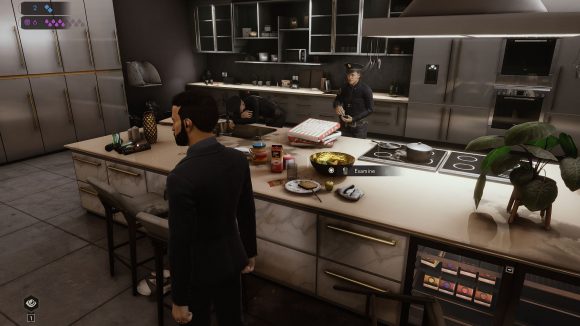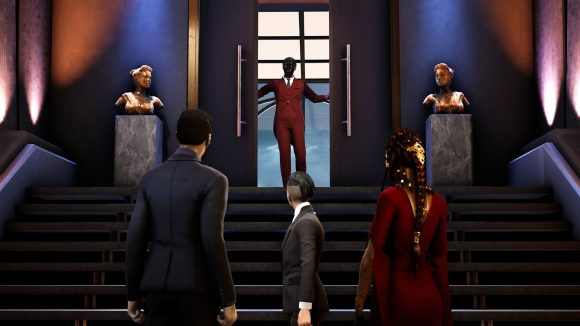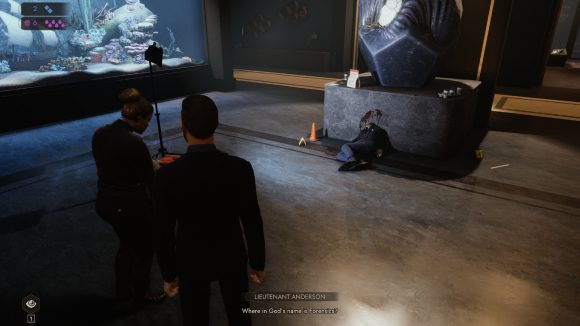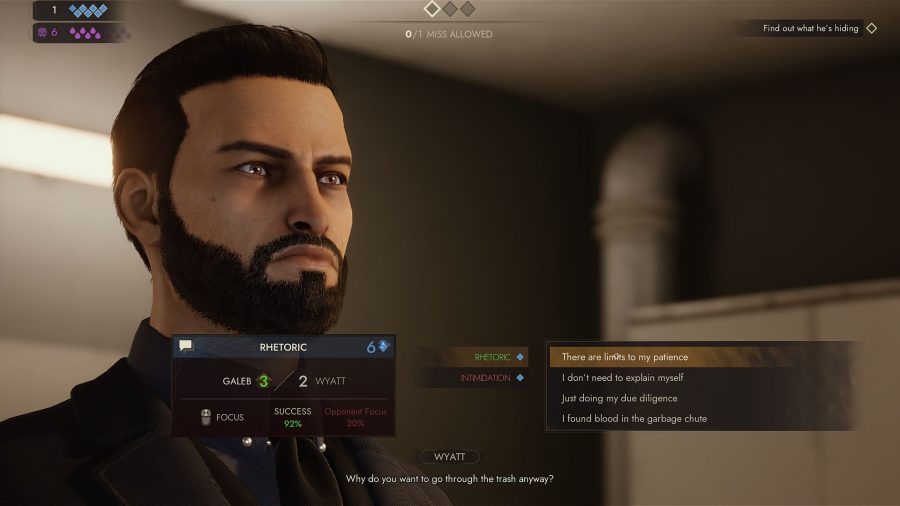Our Verdict
Gripping supernatural subterfuge meets perfunctory mechanics. Worth it to explore the World of Darkness, though.
Our Vampire: The Masquerade – Swansong review starts with the titular ‘Masquerade’ – vampire society’s characteristically elegant term for the secret of their existence – under threat. Prince Hazel of Boston’s ruling Camarilla sect has just put out a code red following an attack on her kin at a party uptown, which makes clear that someone wants to disturb the status quo. Is it the Anarchs, a sect of vampires who refuse to live by the civilised Camarilla’s code? Some internal skullduggery? A rival organisation?
Bram Stoker’s vision of the vampire was that of a lone lothario, a creaking but impeccably mannered figure in ruffled collar and cuffs. Count Dracula thinks only of fine taffeta, new pick-up lines, and the comely young women of high society, and he’d last maybe 20 minutes in this game before the Camarilla Prince put a hit out on him.
The vampires of Vampire: The Masquerade are more like an undead illuminati: cold and calculating figures with fangs, yes, but also minds full of political machinations and manoeuvrings. They’re pulling the strings of our society, keeping watch on everything we do, our environmental impact, our health. Because we’re the walking blood bags they need for sustenance, and they need to preserve the Masquerade from us forever, lest we hunt them to extinction.
It’s a fantastic setting for a game, truly, and not just because of the VTM: Bloodlines nostalgia. The World of Darkness that originated in Mark Rein-Hagen’s 1991 tabletop RPG is rich with detail, and gives you that same thrill the first Matrix movie pulled off: seeing our familiar world in a totally different, and far more sinister, context.
It takes a while to get there though. This is a three-protagonist game, switching perspectives between a trio of vampires in Prince Hazel’s inner circle. As such, it gets bogged down in an incredible amount of exposition before giving you any agency. It’s understandable – for newcomers to the world, it has to explain the concept, the rules of vampire society, the code red that just happened, and then introduce a key character and establish their motivations. Three times in a row. That’s a lot to get through in a game’s opening hour. Still, you can’t shake the feeling that there was a more elegant solution than the current deluge of conversations.
Once you’re finally onboarded with the where, when, and why, you’re handed the reins of a detective game with RPG game elements and conversation boss fights. It’s not unlike Big Bad Wolf Studio’s previous game The Council in that way, all courtly intrigue and raised eyebrows where there might usually be combat. The interactions with the environment are pretty perfunctory, and if you wanted to be reductive about it you’d say it boils down to combing each room for ‘interact’ prompts, almost always placed on papers and drawers, then moving on to the next area.
It does get spicier in conversations and when using vampiric abilities though. The latter give you access to additional senses, showing you trails where the character you’re tracking has been, flagging the presence of an illusion, hiding you from others. While these abilities aren’t on any kind of cooldown and you can thus walk around with them turned on at all times if you like, contextual actions cost points.

Say you want to hack a computer, dominate a character in conversation to bend them to your will, or use your education to gain greater insight from a piece of evidence you found. You’ll need to spend points to do any of that, and those points are dealt out meagrely. You might get one or two as a reward from a conversation, or by levelling up after a scene. It always feels like you don’t have quite enough to do what you want though, particularly in conversations where you can choose to spend even more points on an action in case your adversary also chooses to ‘focus’ and increase their ability at the social tool you’re trying to best them with. This is probably a good thing. Spending points feels meaningful, however frustrating it is to leave stones unturned for the sake of budgeting them.
Emem, Galeb, and Leysha are a worthy trio of protagonists, and Swansong strikes a nice balance between giving you a strong sense of how they want to behave and letting you choose their approach. My Emem is all about detective skills, Leysha’s a physical type, and Galeb is the jack of all shady trades, and that’s down to the points I spent on their abilities. They might have totally different specialities in your game. Emem will still be a charming straight-talker, though, Leysha will be a struggling mother, and Galeb will relish his role like he’s in a Channel 5 TV movie.
Over the course of a few days in September 2019, the three face tough orders from Prince Hazel, and find themselves drawn deeper into a spree of murders. As storytelling goes, it’s not particularly literary or profound, but it is engaging, and it makes the most of the World of Darkness setting. It’s a decadent, unfeeling place, like the world of the new Hitman games, full of mysterious super-rich people who seem to have it all but live in private misery, and it’s brought to life with some fantastic interior sets. It’s like Architectural Digest meets Twilight, in the best possible sense.
Quite how much say you have in that story, I’m not sure. There are definitely some big decisions, right from the first scene, and they have knock-on effects throughout the game. But I also failed a confrontation at one point, and expected to pay for it with massive consequences. I’d met a ghoul masquerading as a cop at a crime scene who’d picked up some sensitive documents about the Camarilla and was about to share them with the police.
Thanks to my clumsy debating skills she remained resolute in her decision, but after the HUD told me I’d failed the confrontation I was given three consecutive conversational options with a 100% chance to dominate my enemy and basically do what I’d been trying to achieve all along. Disaster averted, documents kept hidden, ghoul sent packing. What was at stake in the confrontation, then?
It’s not especially polished or pretty. The interaction doesn’t do anything to move story games forward as a genre. But Swansong has something about it – an atmosphere, a depth of fiction – that keeps you in the moment, and makes it easy to forgive the perfunctory nature of what it asks of you from scene to scene.











